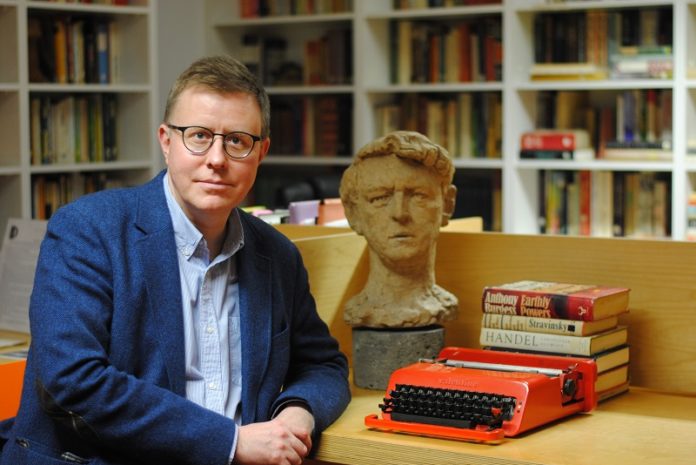A 200 page document that was planned to be the follow up to Anthony Burgess’ Clockword Orange has been discovered in Manchester.
The non fiction book was often hinted at as a response to the criticism of the Clockwork Orange film which following its release was blamed for copycat violence across the country.
The film which told the story of the state’s attempt to cure a teenage delinquent, was banned, and it was only after Kubrick’s death in 1999 that the film was re-released in UK cinemas and made available for home viewing.
The manuscript was discovered at Manchester’s Anthony Burgess Institute after being discovered in papers found at Burgess’s house just outside of Rome ten years ago.
The author abandoned the manuscript when he came to realise “he was a novelist and not a philosopher” but then published a short autobiographical novel tackling some of the same themes, The Clockwork Testament, in 1974.
Burgess described The Clockwork Condition as a “major philosophical statement on the contemporary human condition”. The book survives as a series of typewritten drafts, notes and outlines, in which Burgess develops ideas from his original novel, addresses the controversy surrounding Kubrick’s film, and puts forward new arguments about the possible dangers of technology and visual culture, especially film and television.
The Clockwork Condition describes the 1970s as a “clockwork inferno”, with human beings reduced to the status of programs or cogs in the machine, “no longer much like a natural growth, not humanly organic.” Burgess writes about modern men and women as “searching for an escape from the bland neutrality of the condition in which they find themselves.”
Professor Biswell, who is also Director of the International Anthony Burgess Foundation in Manchester, said: “This remarkable unpublished sequel to A Clockwork Orange sheds new light on Burgess, Kubrick and the controversy surrounding the notorious novel.
“This is a very exciting discovery. Burgess’s only public reference to The Clockwork Condition was in a 1975 interview where he suggested that it had not developed beyond the idea stage.
“Part philosophical reflection and part autobiography, The Clockwork Condition provides a context for Burgess’s most famous work, and amplifies his views on crime, punishment and the possible corrupting effects of visual culture.
“It also casts fresh light on Burgess’s complicated relationship with his own Clockwork Orangenovel, a work that he went on revisiting until the end of his life. As the film is re-released in UK cinemas and the Design Museum launches a major Stanley Kubrick exhibition in April, now is the right moment to re-examine Burgess’s complex and celebrated book.”
As the book project grew in scale and ambition, Burgess’s increased popularity following the Clockwork Orange film led him to take on a large number of other writing commitments.
Professor Biswell said: “Eventually Burgess came to realise that the proposed non-fiction book was beyond his capabilities, as he was a novelist and not a philosopher. It was then suggested that he should publish a diary under the title ‘The Year of the Clockwork Orange’, but this project was also abandoned.
“Instead he wrote a short autobiographical novel, which also features ‘clockwork’ in the title – The Clockwork Testament. Published as an illustrated novel in 1974, the book engages with the same thematic material he had intended to use in The Clockwork Condition, such as good and evil, original sin, and the problems of modernity and violence.”
“In theory it would be possible to create a publishable version of The Clockwork Condition. There is enough material present in the drafts and outlines to give a reasonably clear impression of what this lost Burgess book might have been.”







